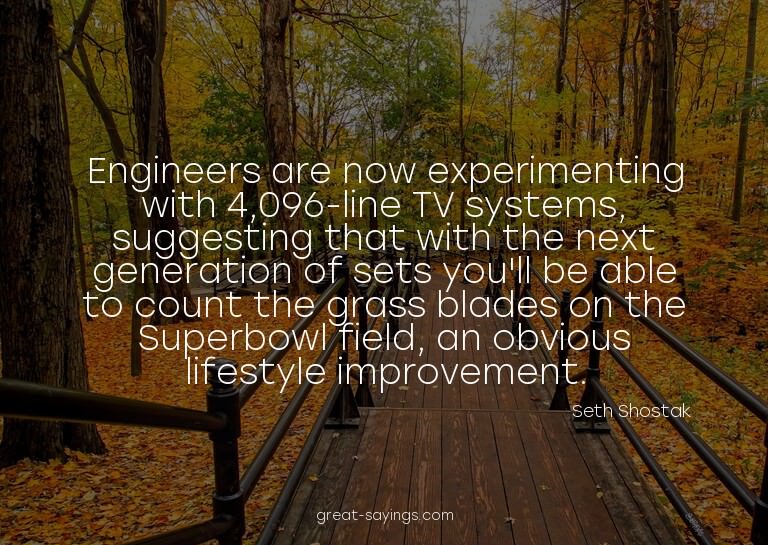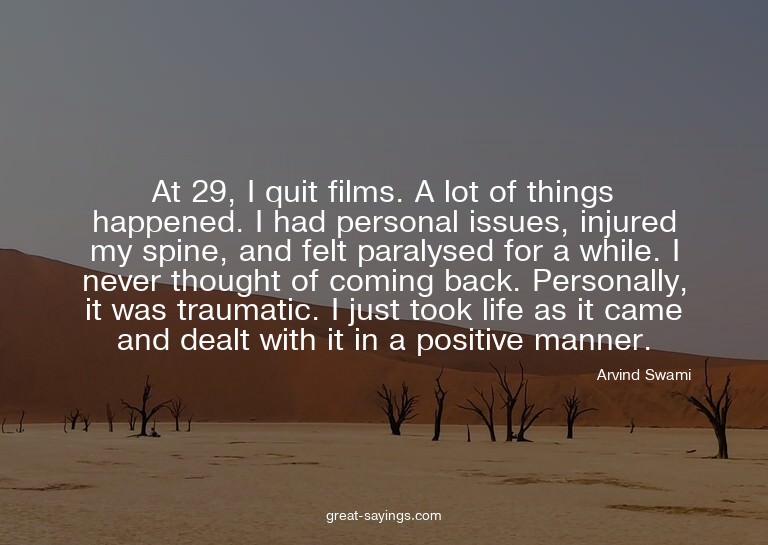Words matter. These are the best Seth Shostak Quotes, and they’re great for sharing with your friends.

Here’s a news flash: scientists can be wrong. That’s no big deal (unless the scientist is you), since research is self-correcting. Consequently, most errors by scientists become historical curiosities, with little long-term importance.
Frankly, I’ll believe in horoscopes the day I can describe my personality to an astrologer and they tell me what date I was born.
When was the last time you bought an American-made radio or television? If you’re Gen X or younger, the answer is ‘never.’ Does the label on that shirt or skirt you’re wearing say ‘Made in the U.S.A.’? If so, you probably got it at Goodwill, or maybe at a Smithsonian garage sale.
While it may be disappointing, I have to confess to people who ask for my insights on the meaning of it all that astronomy doesn’t provide any clearly useful data on matters of sin and souls.
We’re interested in things that have big teeth, and you can see the evolutionary value of that, and you can also see the practical consequences by watching ‘Animal Planet.’ You notice they make very few programs about gerbils. It’s mostly about things that have big teeth.
This plucky NASA telescope is able to find planets en masse. If you compare planet hunting to prospecting for gold, then Kepler is equivalent to trading in your trusty pan for a diesel-powered sluice box.
In general, when moviemakers talk to scientists, they usually see them as a resource to solve particular technical problems or script problems for them. So, something like: what sort of weaponry would aliens be able to wield?
Buying insurance is no one’s idea of fun. And it’s especially easy to berate something as funky-sounding as writing checks to defend our neighborhoods against apartment-size rocks from space. But this is one insurance pitch that makes perfect sense. Ask the dinos.
Our brains are continuing to evolve, and perhaps a few tens of thousands of years from now, our descendants will walk around with five pound brains, allowing them insights that we can’t imagine.
What’s a space elevator? Simply described, it’s a thin ribbon, about 3 feet wide and 60 thousand miles long, stretching upwards from the surface of the Earth. The lower end is bolted to a heavy anchor (think of an oil drilling platform), and the top is capped with a counterweight.
‘Battleship’ is not a film that Francois Truffaut would have made. Nor would any of those other namby-pamby European directors. Nope, this picture eschews that Continental obsession with small stories, set in quaint towns filled with pockmarked folk doing their banal things.
There’s no doubt that the Moon is more than a handy night light and a hair restorer for werewolves. It’s responsible for the substantial amplitude of earthly ocean tides. These are of obvious influence if you’re a geoduck, a type of clam that people dig up at low tide.
Consider that the overwhelming majority of those 40,000 near-Earth asteroids are small enough to fit on the parking lot at the mall. And while these rocky runts won’t cause Armageddon, they could still flatten such popular hominid hangouts as Manhattan or downtown Des Moines.
I still remember my dismay in the summer of 2007 when – for the first time in the history of planet Earth – America’s share of auto production dropped below 50 percent.
On Mars, where the air is spare – a hundred times less dense than on Earth – someone could hear you scream. But you’d have to really strain to get anyone’s attention. On the Red Planet, where the wind is high-pitched and faint, even a symphony orchestra will sound as thin as cheap gruel.
Despite tantalizing suggestions of fossilized microbes in meteorites, puzzling and possibly biogenic methane gas in the martian atmosphere, and a long-standing controversy over the Viking lander experiments of nearly 40 years ago, there’s still no Exhibit A that points unequivocally to biology in our own back yard.
It seems that ‘rocket scientist’ is a job category that’s here for the long haul, like ‘mortician.’ But all this activity masks an important point: rockets are not a terribly efficient way to lift things into space.
We can no better imagine what will be happening on the moon 500 years from now than Columbus could imagine contemporary Manhattan. Except to say that it will be a place familiar to billions of people.
Disasters happen. We still have no way to eliminate earthquakes, wildfires, hurricanes, floods or droughts. We cope as best we can by fortifying ourselves against danger with building codes and levees, and by setting aside money to clean up afterwards.
Faith is a personal matter, and should never be a cudgel to stifle inquiry. We tried that approach about 1,200 years ago. The experiment was called the Dark Ages.
Studying Sol’s interior by looking for analogous patterns on its incandescent face is known as helioseismology, an active – if largely unpronounceable – research area that uses sound as a probe of our home star.
Any beings advanced enough to traverse interstellar distances are at least a thousand years beyond our technical level. Spending gobs of time examining our missiles is equivalent to sending the Air Force back to the Middle Ages and insisting they examine the chain mail factories.
The ideas of science germinate in a matrix of established knowledge gained by experiment; they are not lonesome thoughts, born in a rarified realm where no researcher has ever gone before.
Typically, only about 2 percent of the American populace tunes in to PBS’s ‘Nova’ series – the most successful science show on the tube. ‘Survivor’ and ‘X Factor’ get twice the ratings.
Given the tendency of many to picture God’s realm as somewhere high above Earth – an idea that sounds suspiciously like the Greek stories of deities perched on inaccessible mountain tops – it may seem plausible to assume that astronomers have special insight. Well, of course they don’t.
The stars look the same from night to night. Nebulae and galaxies are dully immutable, maintaining the same overall appearance for thousands or millions of years. Indeed, only the sun, moon and planets – together with the occasional comet, asteroid or meteor – seem dynamic.
In the four years since its launch, Kepler has chalked up 122 new and confirmed planets. It’s also caught the scent of nearly three thousand additional objects, of which probably 80 percent or more will turn out to be other-worldly orbs.
Like prospecting in the 19th century, reconnaissance of the asteroids would of necessity take place in an arena where trouble is likely and help is distant. Heroic stories of individual triumph and failure, set on landscapes never seen by humankind, are in the cards.
Mountains aren’t eternal: even the most imposing massifs are smoothed away by weathering in a few hundred million years or less. Plate tectonics makes new ones, and without it, our future would be flat.
The strongest signals leaking off our planet are radar transmissions, not television or radio. The most powerful radars, such as the one mounted on the Arecibo telescope (used to study the ionosphere and map asteroids) could be detected with a similarly sized antenna at a distance of nearly 1,000 light-years.
Lamentably, alien audiences may be frustrated by the switch to digital television. That’s because the transmitter power for DTV is fairly evenly spread across the spectrum. The spikiness is gone, and from afar, the attention-grabbing squeals of analog television’s carriers have been replaced by DTV’s smooth, low hiss.

Engineers are now experimenting with 4,096-line TV systems, suggesting that with the next generation of sets you’ll be able to count the grass blades on the Superbowl field, an obvious lifestyle improvement.
The thing to keep in mind is that we’re still in the very early days when it comes to the search for extraterrestrial intelligence. Saying there’s a silence is a bit like if Columbus, looking to discover a new continent, only sailed 10 miles off the coast of Spain before turning back to say, ‘Nothing out there!’
When I was a kid, which was just after Edison invented moving pictures, there were films that involved aliens coming to Earth for bad purposes.
Clearly, enriching the cosmos with heavy elements takes a while. So there’s inevitably an interval between the sterile aftermath of the Big Bang and a time when the cosmic chemistry set had enough ingredients to make rocky planets (and squishy biology).
The bottom line is, like, one in five stars has at least one planet where life might spring up. That’s a fantastically large percentage. That means in our galaxy, there’s on the order of tens of billions of Earth-like worlds.
It’s hard to imagine anything more interesting than learning how we’re woven into the enormous tapestry of existence. Where did our universe come from? How special is our world, and how special are we? We allocate tens of billions of dollars annually to NASA, NSF and academia in search of the answers.
The total funding of SETI (the Search for Extraterrestrial Intelligence) in the U.S. is 0.0003 percent of the tax monies spent on health and human services. And it’s not even tax money. The SETI Institute’s hunt for signals is funded by donations.
‘Eternal inflation,’ as it’s called – the endless generation of new universes – may be a hyper-cosmic imperative. It seems that it must happen.
Five centuries from now – barring unimaginable catastrophe – the moon will be developed real estate. There’s economic incentive to exploit the moon – the helium-3 will be useful in powering fusion reactors, and the rare earth elements could supplant the limited terrestrial supply of these materials.
Pages: 1 2












